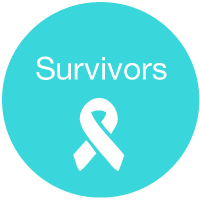Leave a Comment:
1 comment
[…] Pediatric Cancer Survivors Incr, Have Morbidities […]
Reply
Learn about conventional, complementary, and integrative therapies.
Dealing with treatment side effects? Learn about evidence-based therapies to alleviate your symptoms.
Click the orange button to the right to learn more.

Episode 1, Magic Bullets in the Ken Burns documentary “Cancer: The Emperor of All Maladies” vividly portrays how oncology learned to heal pediatric cancers through the administration of toxic chemotherapies beginning in the 1960’s. Unfortunately, also as the documentary explains, survivors of pediatric cancers pay a price of a lifetime of chronic morbidities as the study linked an excerpted below discusses.
So the good news is that children diagnosed with cancer stand a good chance of living more than five years. The bad news is that most of these survivors will live a life of:
Generally referred to as “self-reported functional impairment, activity limitations, impaired mental health, pain, or anxiety/fear.”
If it sounds as though I am conflicted about this oncologic Faustian bargain it’s because I am. Though I am not a pediatric cancer survivor, I am a long-term (diagnosed in ’94) cancer survivor living with much of the same long-term and late stage collateral damage that newly-diagnosed pediatric cancer patients can look forward to.
I don’t believe that chronic morbidities need be a pediatric cancer survivor’s fate. While I did fall into chronic atrial fibrillation (chemo induced heart damage) I did so 15 years after undergoing the chemo that most likely damaged my left ventricle heart muscle. And I have been living with chronic a-fib since 2010.
I live a regimen of evidence-based nutrition, supplementation, and lifestyle therapies for the healing of my brain, heart and nerve damage, etc.
While I have developed many of the common long-term and late stage side effects referred to below, I have managed to avoid several side effects that I should have developed by now. Think secondary cancer, premature aging and or frailty.
And my chemotherapy-induced cardiomyopathy has either stabilized or improved depending on the metric chosen to look at.
For more information about these healing therapies, scroll down the page, post a question or comment and I will reply ASAP.
Thank you,
David Emerson
“About 70 percent of the survivors of childhood cancers were estimated to have a mild or moderate chronic condition, and about 32 percent were estimated to have a severe, disabling, or life-threatening chronic condition. An estimated 35 percent of the survivors, ages 20 to 49, had neurocognitive dysfunction; about 13 to 17 percent of those in this age group had self-reported functional impairment, activity limitations, impaired mental health, pain, or anxiety/fear…
Efforts to understand how to effectively decrease morbidity burden and incorporate effective care coordination and rehabilitation models to optimize longevity and well-being in this population should be a priority. We know that many of these morbidities are at least somewhat modifiable in the general population…”
[…] Pediatric Cancer Survivors Incr, Have Morbidities […]
Reply